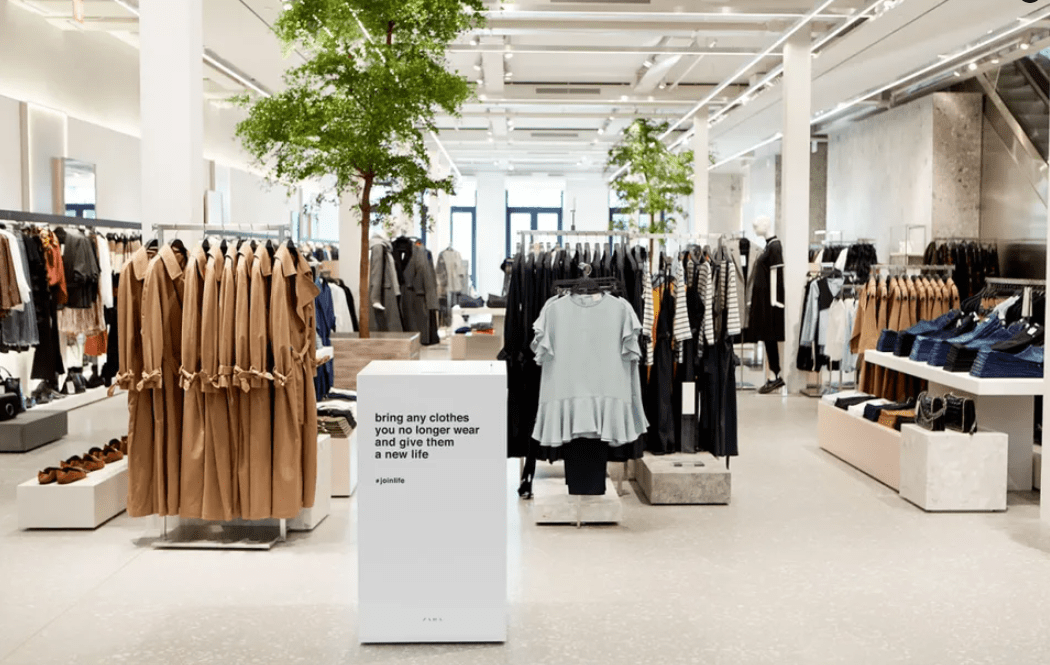
Shaping the Future: Sustainable Retail Design Trends
Sustainable Retail Design Trends are not just a passing fad but a transformative force shaping the future of retail spaces. From eco-friendly materials to energy-efficient lighting, retailers are increasingly embracing sustainable design principles to create appealing, environmentally conscious, and forward-thinking retail environments.
Eco-Friendly Materials and Finishes
One of the prominent trends in sustainable retail design is the use of eco-friendly materials and finishes. Retailers are opting for recycled and upcycled materials, reclaimed wood, and low-impact finishes to reduce their environmental footprint. This trend not only aligns with sustainability goals but also adds a unique and authentic touch to the retail space.
Energy-Efficient Lighting Solutions
Energy-efficient lighting is a key aspect of sustainable retail design. LED lighting, in particular, has become a popular choice for its energy-saving capabilities and longevity. Retailers are incorporating smart lighting systems that adjust brightness based on natural light levels and occupancy, contributing to energy conservation and creating an inviting atmosphere for customers.
Green Walls and Living Elements
Bringing nature into retail spaces is a growing trend in sustainable design. Green walls, vertical gardens, and the incorporation of live plants within the store contribute to improved air quality and a sense of well-being. Retailers are recognizing the aesthetic and environmental benefits of integrating living elements into their design concepts.
Adaptive and Multi-Functional Spaces
Sustainability is also reflected in the adaptability and multi-functionality of retail spaces. Flexible layouts that can be easily reconfigured to accommodate different product displays or events reduce the need for frequent renovations. This trend not only supports sustainability but also enhances the overall versatility and longevity of the retail environment.
Local Sourcing and Artisanal Collaboration
A focus on local sourcing and artisanal collaboration is gaining traction in sustainable retail design. Retailers are partnering with local artisans and craftsmen to showcase unique, locally made products. This trend promotes community engagement, reduces carbon footprints associated with shipping, and supports local economies.
Upcycling and Circular Design Principles
Embracing circular design principles, retailers are increasingly incorporating upcycled elements into their store design. From repurposed furniture to creatively reimagined fixtures, upcycling not only reduces waste but also adds a distinctive and eclectic touch to the retail environment. This trend resonates with environmentally conscious consumers who appreciate sustainable and innovative design.
Digital Integration for Sustainable Shopping
The digital integration of sustainable practices is a noteworthy trend in modern retail design. Retailers are leveraging technology to enhance the sustainability of the shopping experience, such as implementing digital signage for dynamic pricing, interactive displays for product information, and mobile apps for eco-friendly product suggestions. This tech-savvy approach aligns with the evolving expectations of contemporary consumers.
Eco-Friendly Packaging Solutions
Sustainable retail design extends beyond the physical store environment to packaging. Retailers are adopting eco-friendly packaging solutions, including biodegradable materials, minimalistic designs, and reusable options. This trend not only reduces waste but also communicates a commitment to sustainability to consumers.
Energy-Neutral and Net-Zero Stores
An ambitious trend in sustainable retail design is the creation of energy-neutral or net-zero stores. These stores aim to generate as much energy as they consume, often through the incorporation of solar panels, wind turbines, and energy-efficient HVAC systems. While challenging, the pursuit of energy-neutral retail spaces underscores a commitment to sustainability and environmental responsibility.
Consumer Education and Transparency
Incorporating consumer education and transparency into retail design is a growing trend. Retailers are providing information about the sustainable practices they adopt, the sources of their products, and the environmental impact of their operations. Educating consumers empowers them to make environmentally conscious choices and reinforces the retailer’s commitment to transparency.
Embracing Sustainable Retail Design
In conclusion, Sustainable Retail Design Trends are driving a paradigm shift in the way retail spaces are conceived and experienced. From eco-friendly materials and energy-efficient lighting to adaptive spaces and digital integration, sustainability is becoming a cornerstone of modern retail design. To explore more about Sustainable Retail Design Trends, visit NinthWorldHub.com.
